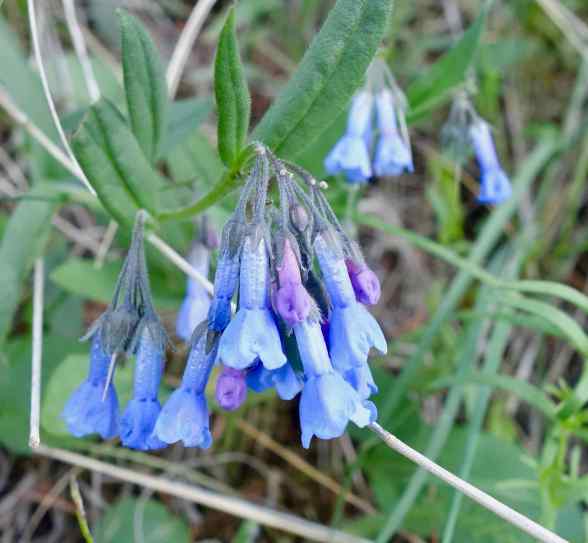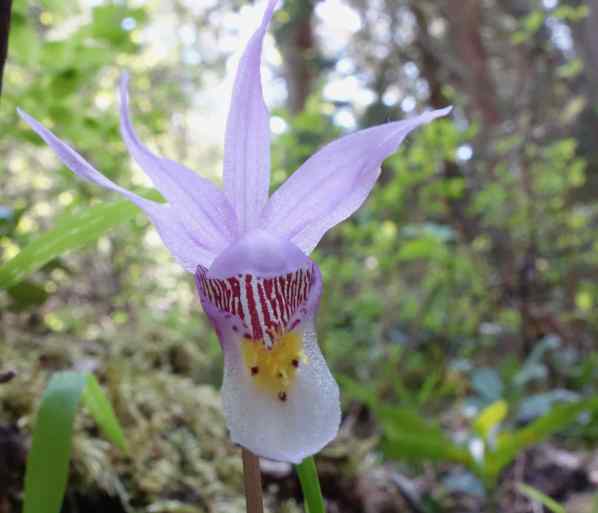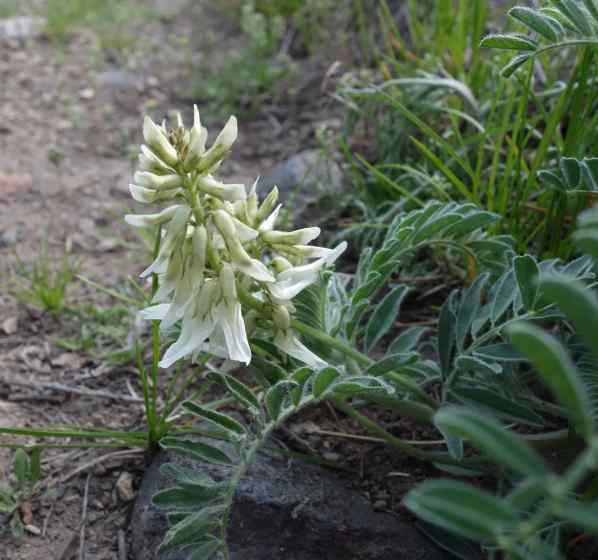We have hiked in many countries over numerous years, through deserts and up mountains, and rarely have we stopped to look at plants around us. Since our trip to Borrego Springs, California in March to see the “super bloom,” a rare event when the desert had an unusually high rate of blooming plants, everything changed for us. We became aware of wildflowers as we hiked, and now, we seemed to see them everywhere. It was a previously unknown world to us.
We spent four days at Chico Hot Springs in Pray, Montana with a plan: soak in the springs, hike, and eat great food. Mission accomplished. What we hadn’t expected was the number of wildflowers dotting the hiking trails. We’re never too old to learn about new things. So we took their photos, consulted a great website for help in identifying the plants, and tried to learn about what we’d seen.

The probability of seeing old man’s whiskers (geum triflorum), also called prairie smoke, where we hiked was listed at 100%. We must have passed by this flower many times and never noticed it before.

Fuzzytongue penstamen (penstemon eriantherus) is found in the West in rather poor soils.

We love blue and were thrilled to spot oblongleaf bluebells (Mertensia oblongifolia).
We met hikers on a path through an evergreen forest, and they told us they had seen one very little orchid not too far ahead by the side of the trail. As we chatted, one of the hikers pointed to a tiny flower a few feet away. It turned out to be the same orchid, a fairy slipper.

Fairy slipper (calypso bulbosa) is endangered in some western US states, though it can be found in a good number of European and Asian countries as well as the US. “The genus Calypso takes its name from the Greek signifying concealment, as they tend to favor sheltered areas on conifer forest floors.”

Utah honeysuckle (lonicera utahensis) has flowers in pairs. It’s found in the Rocky Mountains as an understory plant in elevations up to 7,900’ (2,408 meters).

Canadian milk-vetch (astragalus Canadensis) was one of the many plants used for medicinal purposes by the local Native Americans. The probability we’d see this plant was 33%, so it was a lucky find.

We photographed many sunflower-type plants, including arrowleaf balsamroot (balsamorhiza sagittata).

Littlepod false flax (camelina microcarpa) is also known as lesser gold-of-pleasure. It’s a plant found over most of the world and considered a weed.
Our search is not over. A whole new world opened to us, and we’ll be on the lookout for more wildflowers on our walks. Of course, the flowers will have to compete for our attention with birds and butterflies, too … We have a lot to learn.
May 2017

Welcome to the new world of wildflowers – it should be some fun!
Yes, Beth is really having fun identifying wildflowers … Joe not so much, but he does help her find them to photograph.
Beautiful photos.
Thanks, almost all due to Beth’s eye for composition and a pretty good, though small, camera.
Wherever we travel, we love looking at flowers. And botanical gardens and parks are always on our radar. And the pictures make great screen savers!
Ah, screensavers, now the photos of grandkids and the photos of wildflowers will be in competition for space on the computers.
What a new world you have to discover – great start, and great photographs!
Thx, here we are at 70+, and we keep finding more and more new things to learn about.
The best thing about flowers is that they don’t fly off before you can get closer. Great pitures.
Right, but the wind makes the wildflowers wiggle and wobble, and that makes getting a well-focused photo difficult. Sometimes, we give up and “fly” away without our photo, but the flower remains where it is. We never ever pick the flower.
I agree with the whole wind effect thing